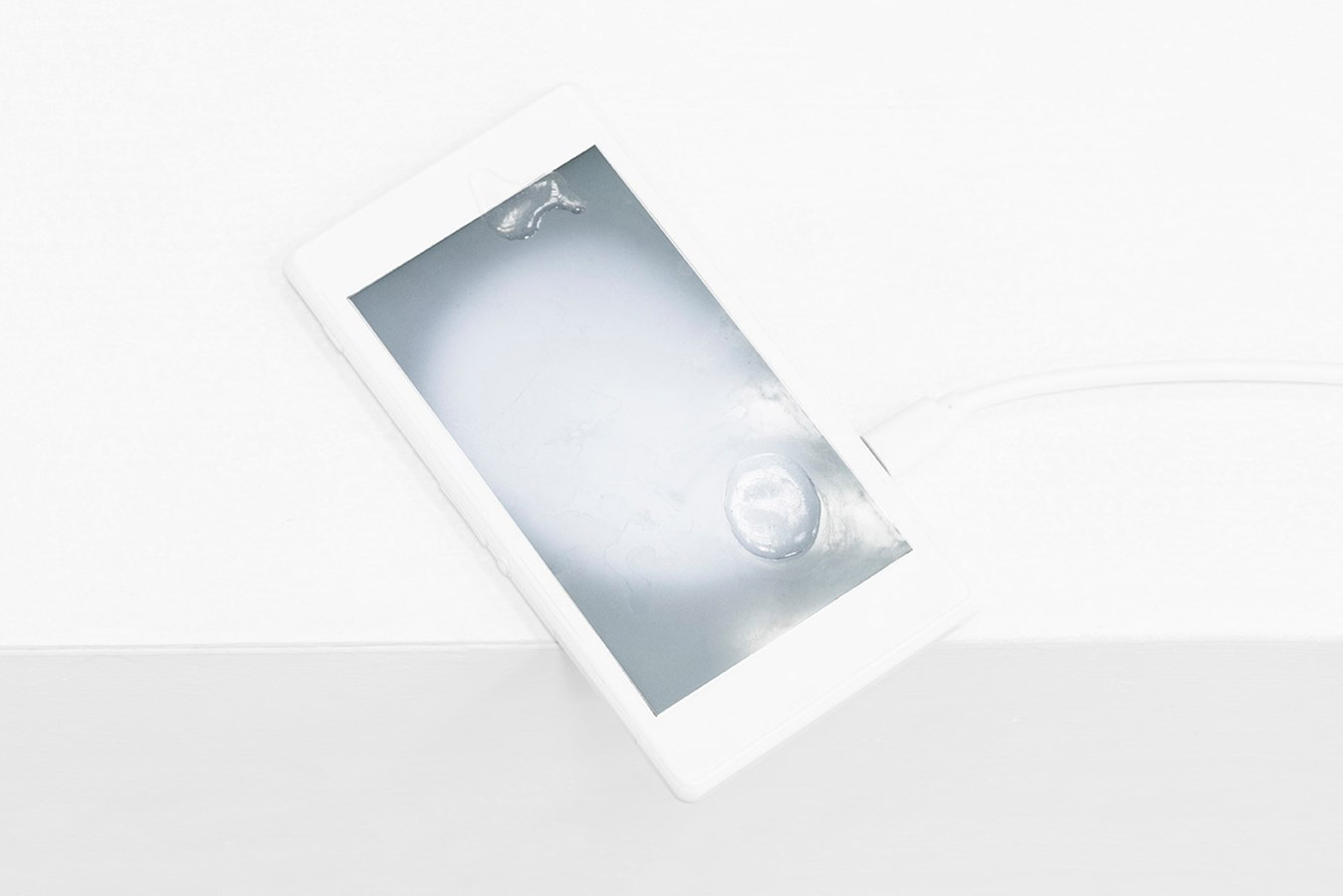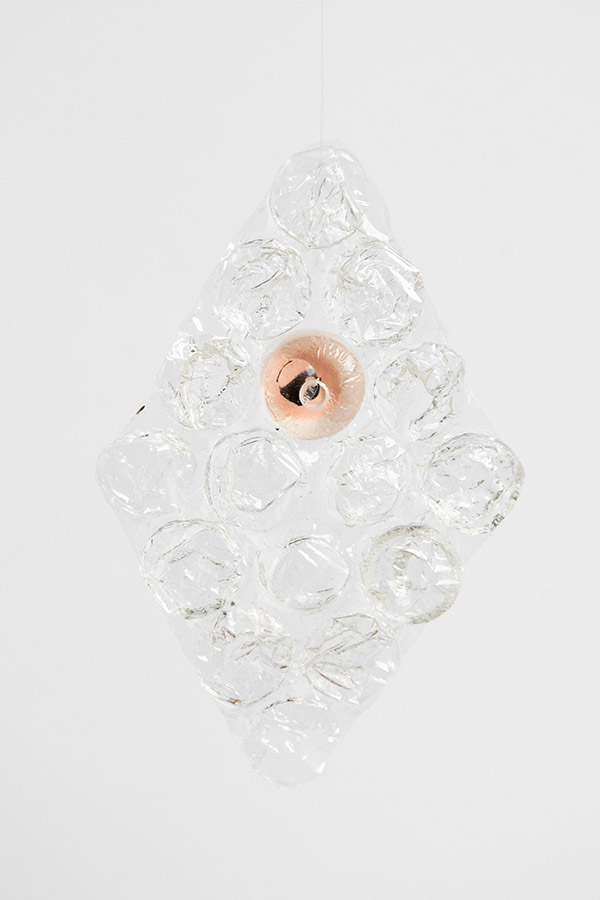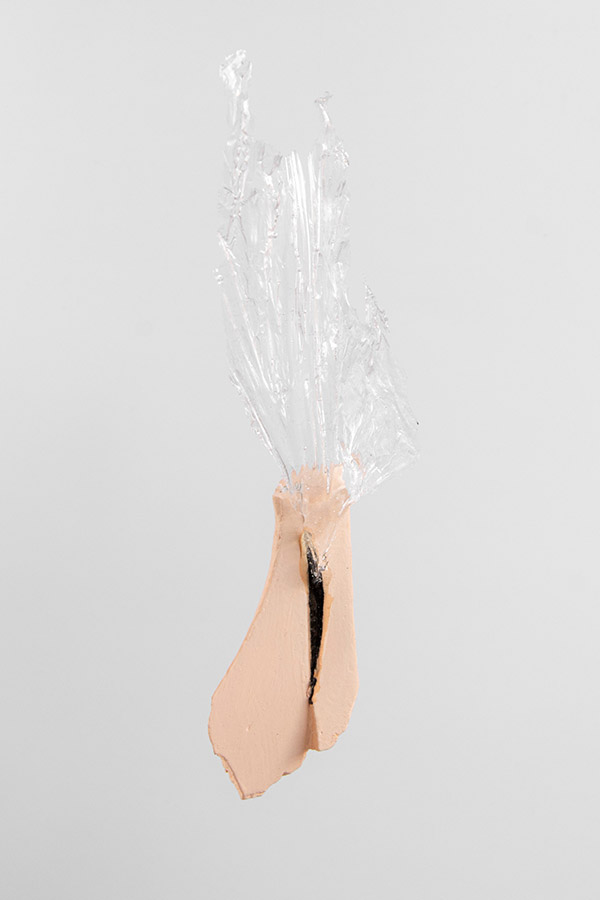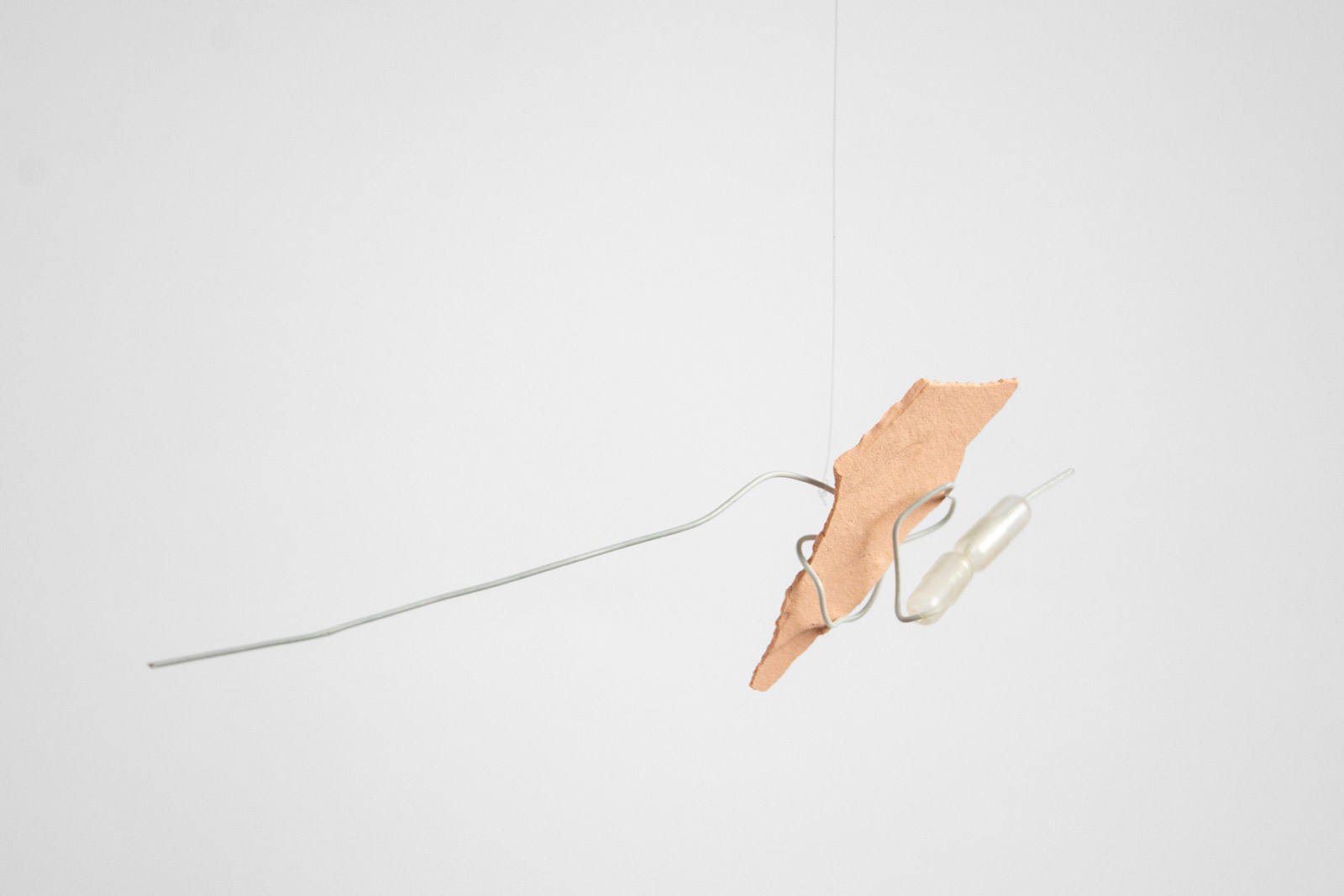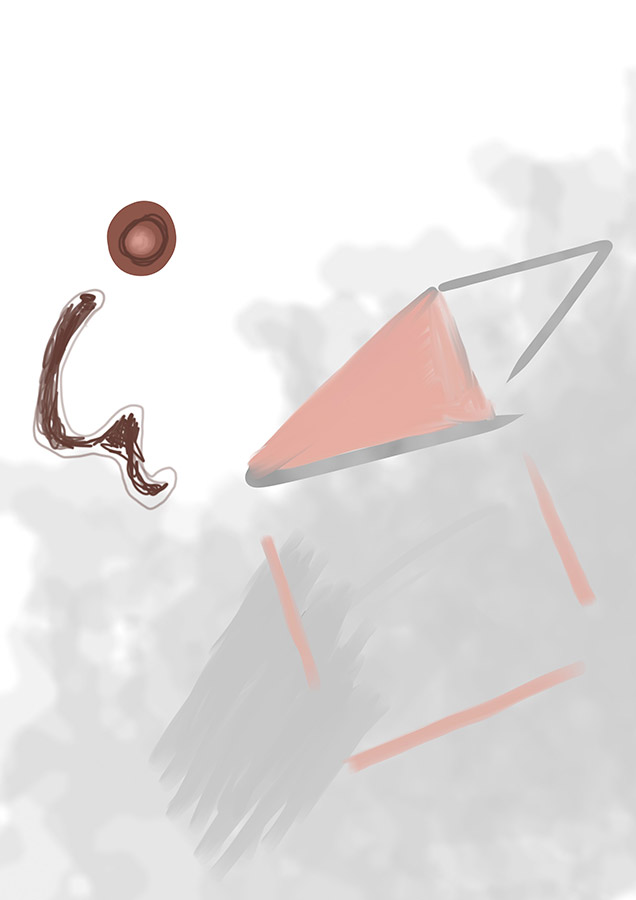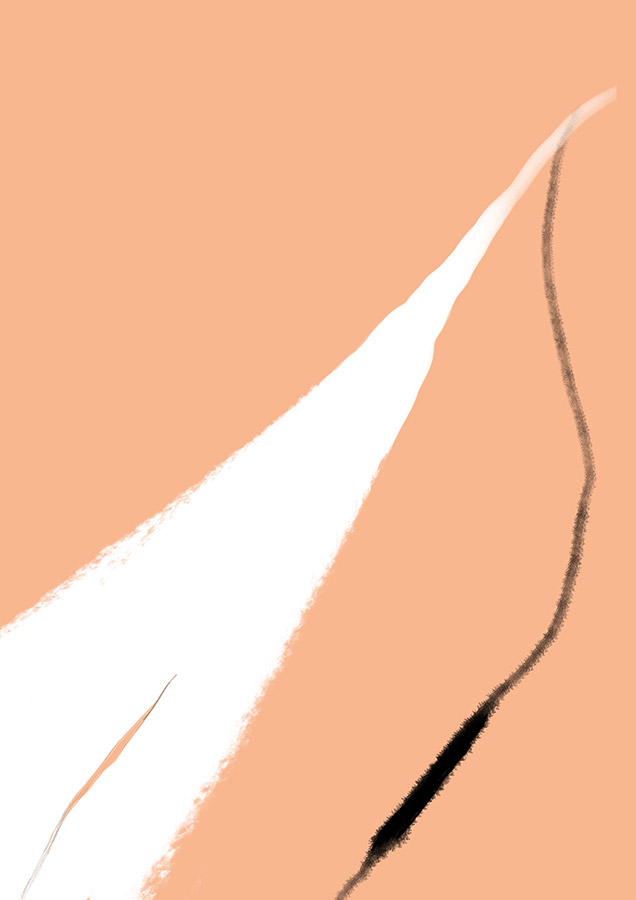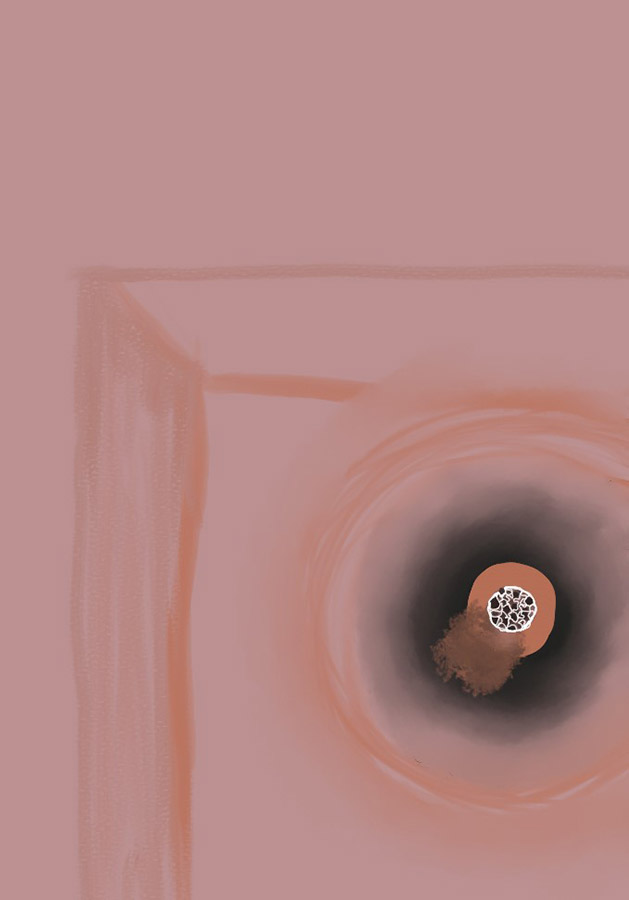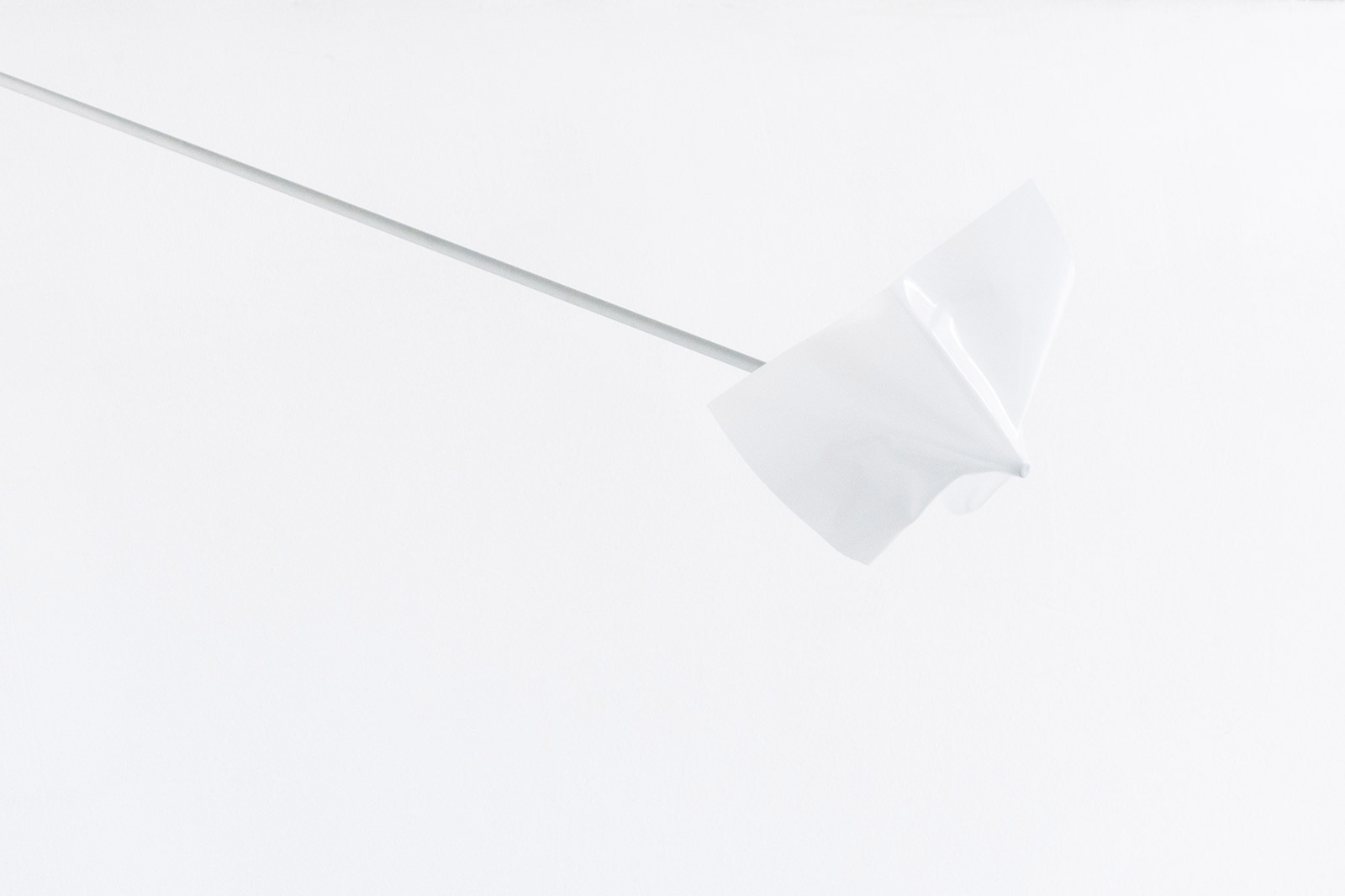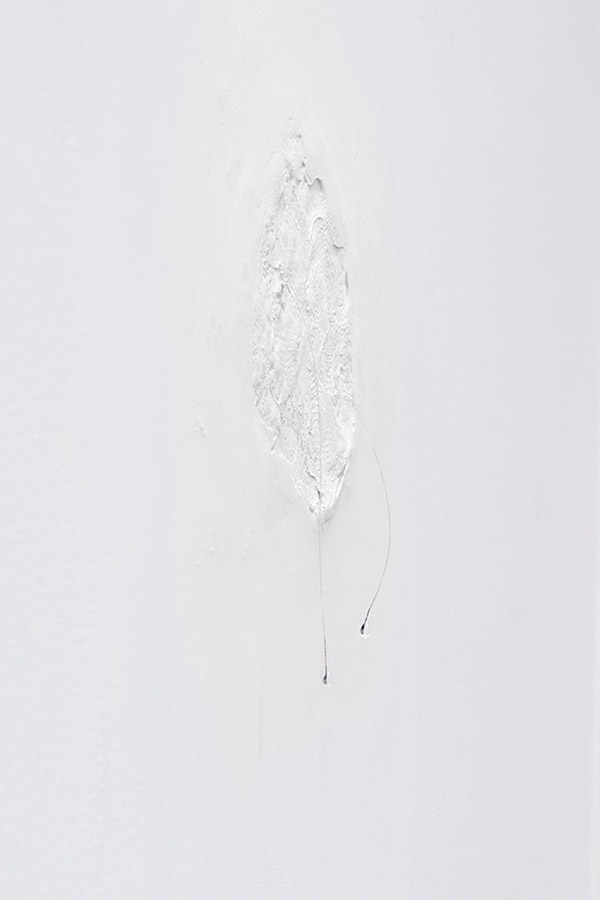Interview with Aga Gabara by Adam Mazur
A.M.: Do you have a MRI scan set as your profile picture?
A.G.: Yes, my own to be exact.
A.M.: Nothing serious?
A.G.: No, I use this photo in my portfolio or on the websites instead of a photo of my face, the head is much more interesting.
A.M.: What are you working on at this moment?
A.G.: Currently I continue concentrating on emotions, expansion-stabilization-sublimation.
A.M.: Psychology or physiology?
A.G.: Both, a motif of a pill and nude-colour appear, I’ve been drawing a lot during the lockdown.
A.M.: How was it in the lockdown?
A.G.: I experienced a moment when I didn’t feel like touching materials, I didn’t create any works that involve objects. That was because of the fact that I had nobody I could show my object-based works to. I started drawing some stuff that was nagging me on a tablet at 2 a.m. Simultaneously the images received their titles, they intertwined with each other. Currently quite a collection of object-based works has appeared under their influence.
A.M.: That’s why I was surprised with your drawings, until now I have known only installations, object-based works and photographs. Do you keep on drawing?
A.G.: Not at all, actually, I guess. I gave up drawing when the situation improved, I gradually returned to works that involve objects and at that moment the analogies from the drawings has simply begun to appear. Probably fully subconsciously.
A.M.: Describe your working method. Where do you get the ideas from and how do you create object-based works?
A.G.: It always starts with some kind of an “anguish”, not to overuse the word “emotion”. The inadequacy of everyday life compared to how I experience it. Since I have already developed the basics of my own artistic language, on the floor of my studio different materials are scattered- from nets and wires to strands, pipes, rods etc. I think they show me what I feel and what hurts me. I give them a meaning, assemble, something comes out with no message in itself, then more attempts happen, more work and interaction with them, until very unconsciously I reach a form in which what I feel is just “there”.
A.M.: Is it a kind of a therapy?
A.G.: Yes and no. It surely is easier when I’m busy creating such a work. It is like pulling out things from the inside and observing it from each side, very metaphorically, as for a longer while it feels as if it wasn’t in my head but besides me. “After” this process, however, there is no relief. It’s not like a therapy session, where you overwork a problem and see the improvement. I guess I simply give them shape, form, colour and so on.
A.M.: You haven’t mentioned neither art theory nor the texts of, for example, Kępiński, about which we talked some time ago and which created a context for your art.
A.G.: While I was writing my undergraduate thesis I started to get inspired by theory, not necessarily art theory. I read psychiatry books and medical articles, but I also devoured texts by Antoni Kępiński, which began and continually are for me a kind of a bridge between the aforementioned physiology and psychology. I still like to go back to them, though not that often. I know some of them by heart. Now much more often I reach for less known, current texts of psychologists or art theoreticians, sometimes doctoral theses of other artists.
A.M.: Are you from Poznań?
A.G.: From Łódź. I have grown fond of Poznań, though, it’s my private sanctuary.
A.M.: From your point of view, how does the art scene in Poznań look like?
A.G.: Pretty good. The Poznań art scene is open to new ideas, it’s very tolerant, but at the same time I like the work ethic, rigor and order. All together it’s a good combination.
A.M.: Any specific locations or names?
A.G.: As for the galleries, on the one hand there is SKALA, where Ula Lucińska and Michał Knychaus work (or used to work) and where people that I value, like Piotr Łakomy, hold their exhibitions. On the other hand Łęctwo and Luka spring to my mind, where I notice a lot of diverse art. There are also groups like SANDRA, as well as exhibitions or defences of UAP students. All the three locations I mentioned seem to be very open to authorial initiative.
A.M.: Why actually have you taken up arts?
A.G.: At school I got good grades in English and Art, sometimes also in Polish. I already had a failed quasi-writing attempt then and I was into culture, you know, like theatre and philharmonic. I could draw landscapes. I was barely accepted in the high school of arts and I simply had no idea what other things in life I could do. Still, the projects I dealt with had very little to do with arts. In high school of arts they teach you how to paint, sculpt and make posters. Luckily I got accepted into photography studies (though very narrowly as well!), which I also chose because I took nice photos of flowers and because my friend accidentally gave me a “COMO” knowing that I liked taking pictures. It wasn’t until my studies in UAP that I learned and began to understand what art is in general and what it may be. After all these years I know how much I have developed, my beginnings in photography studies were rather poor. I’ve grown to understand why I do what I do. I have become aware of this sensitivity and I want to share it, I really like sharing.
A.M.: Can you transfer emotions to the work of art?
A.G.: Of course. Although it doesn’t always work out.
A.M.: When do you know it did?
A.G.: Only when I have a possibility to show the work so, again, share with it.
A.M.: Which work of art is the most important to you and why?
A.G.: One of the object-based works entitled There is no future – the syndrome of time.
A.M.: Can you describe it?
A.G.: A small aluminium tube is trying to break through the white surface of a quasi-piece of paper. A completely frozen “action”. The object-based work actually “constitutes” how I perceive photography, as well as the time or the conception of time expressed by Kępiński in Anxiety. This work initiated a whole cycle and above all my conscious thinking about the medium that I use.
A.M.: As you know, I’m a fan of your work I share with nobody. Could you say something about it?
A.G.: It’s also an important work. I bounced back from an objective perception of emotional states and I concentrate entirely on myself. On the weeping that is a little bit shameful to talk about, as it’s so personal and also “spilling out”. For me tears are the crystallization of what’s inside. I made two small teardrops on a plaster bandage, which I set into the gallery wall, concealing it slightly. A telephone is lying next to them, on which a looped video shows an eyeblink followed by falling tears. You had to bend over it, get closer to see it at all. To put it mildly, the installation on the wall also wasn’t very obvious. Paradoxically I shared with something that we usually simply don’t share with.
A.M.: What is photography?
A.G.: A mechanism and a philosophy of observing, portraying. As the most mechanical medium of art, in my opinion photography resembles the most how an eye or the sense of sight works. A photo or, as I would prefer to say, a photographic image originates entirely outside the box with the shutter. It’s extremely important in my whole creation process. I start from a photographic image. I’m inspired with photography as a phenomenon.
A.M.: From what you say it seems that the whole lockdown didn’t really bother you?
A.G.: It surely was a difficult and tiring mental experience, sometimes even depressing – from the creative point of view – as I couldn’t touch the materials or create anything tactile. Finally a few works that are important to me came into existence during that period.
A.M.: What about interpersonal contacts?
A.G.: In the lockdown I committed myself a lot to collective work, which at first was planned to be a VPF plein air, however due to the epidemic it was quickly moved online. I didn’t take part in it from the very beginning, which is rather funny, as it was thanks to these drawings that I have become involved in No Room Collection. I was showing them during the chat and Magda Żołędź, the coordinator of the project, wrote to me afterwards that it would be great if I joined in the collection, maybe also include my drawings. It developed into a two-month collaboration with other artists, creating a completely new format for some of my drawings (3D video rendering) and finally setting up a website for the whole collective, which is a virtual exhibition space for the NO ROOM collection.
The text is the result of work on the exhibition I Do Not Share with Anyone, a part of the Krakow Photomonth 2020 main programme. Information about manifestos, presentations, discussions, and the works of the project’s participating artists, as well as a PDF catalogue, will be made available on photomonth.com/en/portfolio/i-do-not-share-with-anyone/.
